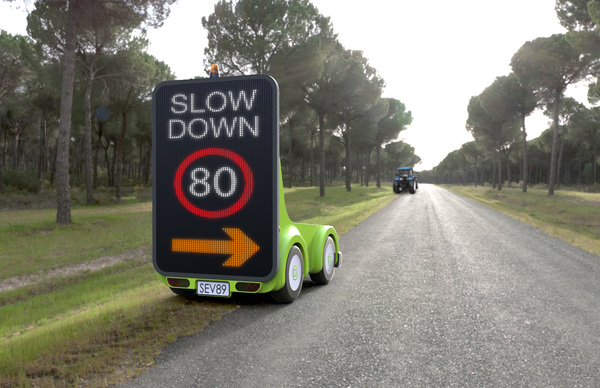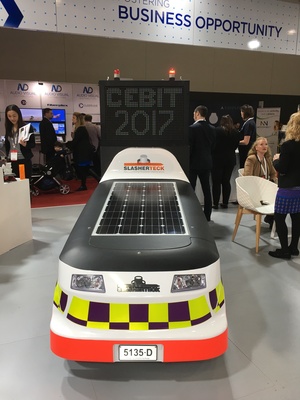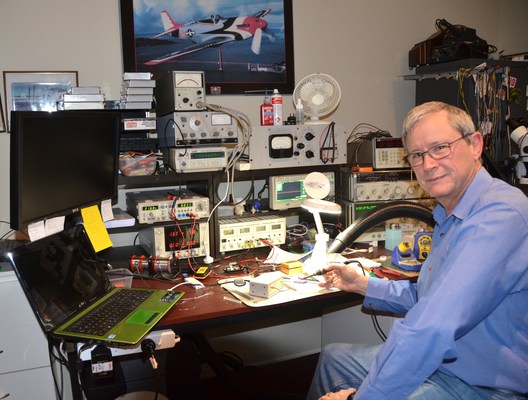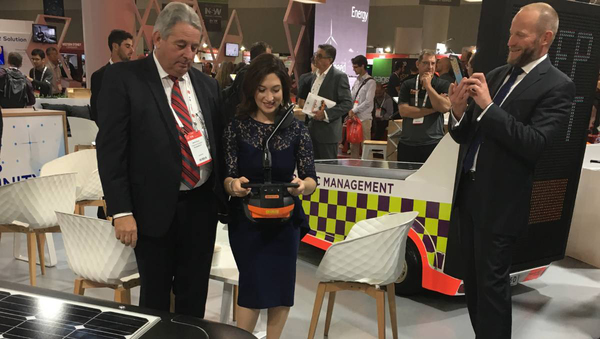By Jeremy Sollars
Tucked away in the ‘Scenic Gem of the Downs’ – otherwise known as Killarney – is a high-tech electronics firm which is poised to deliver a world-first in the region.
Nigel Andrews is the technical director of Blue Electronics and is quietly toiling away in his home-based laboratory in Killarney on a series of innovations which are revolutionising workplace safety.
And if he had it his way, the Southern Downs would be home to the likes of Google and helping to lead the way internationally in the booming tech sector.
Nigel – along with Brisbane-based business partner Martin Smith – is developing GPS-based systems and devices to improve the day-to-day safety of machinery operators like railway maintenance workers and slasher drivers.
And the technology also has the potential to help farmers with fencing, Bobcat operators and safety buffers used around roadworks.
Blue Electronics – which has hangar space at Warwick’s Massie Aerodrome, where it also carries out device testing – was recently the beneficiary of a $100,000 Queensland Government grant through the Ignite Ideas fund.
The funding is enabling the firm to design a low-cost, handheld precision locator system to aid in the locating of fence post holes for fencing.
A farmer can accurately place kilometres of fencing to around 20mm accuracy without the need to use string-lines or other less accurate methods.
Trenches and roads can also be pre-mapped using an app, with the locator able to guide the dozer or backhoe accurately over the plotted track.
A spin-off from this technology is the development of vehicle drones to follow New South Wales local council slashers after the NSW State Government introduced new traffic separation requirements to improve road safety for those workers. Both technologies use Blue Electronics core product which is a precision GPS.
As Nigel explained to the Free Times, the NSW Government initially expected councils would employ drivers to follow council slashers with traffic warning signage on their vehicles but Blue Electronics believes it can deliver a driverless vehicle drone instead, which will result in massive cost-savings.
Similar safety requirements for slasher operators are expected to follow in other states in the near future.
Nigel said Blue Electronics has already worked with the Australian rail industry to develop electronic ‘proximity detection’ devices and alarm systems for railway crews, saving hundreds of thousands of dollars in on-track collisions between workers operating rail track maintenance vehicles.
“We’re working with Queensland Rail, Aurizon, John Holland and the Australian Rail Track Corporation in this area,” Nigel said.
“Blue Electronics has 90 per cent of the market in rail track machine proximity detection in Australia.
“But the vehicle drones we’re now looking at to follow slashers are a world-first.”
Blue Electronics is working in partnership with Slasherteck, a NSW company which makes slashers which can rotate around roadside posts, cutting the grass without the use of chemicals which the EPA has been asking for.
The vehicle drones are intended to be a completely automated and autonomous solution to traffic management, with the technology to dramatically reduce the risk of worker injury from collisions while slashing along roadsides.
The drones will carry LED signage displayed on the front and the back of the vehicle drone, with the signage solar-powered and topped up from the electric vehicle’s mains when required.
“Slasherteck asked us if we could look at traffic separation,” Nigel said.
“We’d actually drawn up the plans for the drones a year or so ago but hadn’t got them patented.
“We just happened to find Slasherteck on the internet and sent them an email asking if we’d be able to assist.
“I had a call two hours later and we’re now in a joint venture.
“Basically, the slasher operator will enter the route they are intending to take and the drone will plot a GPS route and will follow along at a pre-set distance of, say, 300 metres.
“All the routes plotted go into a database so they can be automatically re-generated.
“We’re aiming to undertake trials of the drones at the Massie Aerodrome in the next two months.”
Prototypes of the vehicle drones turned heads at the CeBIT Business Technology Conference Exhibition in Sydney in May, including that of Randi Zuckerberg – sister of Facebook founder Mark – who roams the world checking out the latest in high-tech innovation.
“She spent an hour and a half at our stand,” Nigel said.
“She was overheard saying something like ‘this is something to keep an eye on’.”
‘Let’s invite Google here’
Nigel believes Warwick – and more particularly the Massie airfield – could be a terrific place for a tech firm such as Google to set up a regional facility.
Google undertook a drone trial at Loch Lomond east of Warwick a couple of years ago, where farmer Neil Parfitt was the recipient of a drone delivery involving dog food, a Cherry Ripe and a Crunchie.
Since then drone technology has bounded ahead and Nigel Andrews says the potential for drones to advance both farming operations and medical care in rural and remote areas is endless.
“There is spare land at the aerodrome which could be offered to a company like Google, it’s not being used for anything else,” he said.
“There’s the ability to test drone devices out there and the lifestyle options Warwick offers are huge for new workers and their families.
“Wouldn’t it be great if we could get the council to get Google here by a deal on some land – we’d be looking at 200 Google engineers and their families in the area if they were to establish a facility here.
“The way it’s done in the US is that big companies are offered sites in regional areas for next to nothing and build their factories and employ thousands – we don’t seem to have the same approach in Australia.
“There would also be the opportunity for careers for our local young people in the high-tech sector – and to keep them living here in this area.”
Who is Nigel Andrews?
* Has lived at Killarney for three years, co-owner of Blue Electronics.
* Started the company with business partner Martin Smith after founding and running other electronics firms including Microair, which manufactured aircraft radios and transponders in Australia.
* Nigel designs and builds high tech electronic circuitry, while Martin oversees hardware development, sales and the admin side of Blue Electronics.
* Self-taught electronics technician, stemming from a childhood – and ongoing adult – interest in ham radio from an early age; has been the inventor of around 200 electronics innovations.
* Aviation enthusiast – piloted the Spitfire which flew over the Warwick Remembrance Day commemorations in 2015, and a passionate glider pilot – the main reason he decided to move to the region and settle in Killarney.










